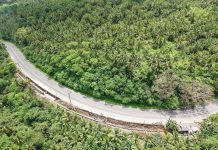TACLOBAN CITY- In order to protect the communities against the devastating effects of future storms, the Department of Environment and Natural Resources (DENR) is targeting 380 kilometers of coastline for the restoration of mangrove and beach forest in Eastern Visayas which was ravaged by super typhoon Yolanda.
In an interview, DENR-8 regional information officer Purificacion Daloos said that the tragedy caused by Yolanda call attention to the need to revive the region’s damaged coastal forests to make its coastlines less vulnerable to extreme weather events.
The DENR started in 2014 its massive tree-planting activity under the government’s National Greening Program (NGP) in the coastal areas in the provinces of Eastern Samar, Samar and Leyte including the city of Tacloban in order to minimize the impact of storm surges, flooding and calamities following Yolanda’s devastation.
Daloos said that the DENR is looking at the reversion of abandoned government-leased ponds to mangroves in order to boost coastal protection, food resources and livelihood opportunities for coastal communities.
She said that the implementation of NGP in the region have been “reconfigured” to give more priority to “coastal intervention” over reforestation in upland communities.
Daloos added that the DENR have allocated around P347 million for the restoration of mangrove and natural beach forest in coastal areas devastated by Yolanda.
“The massive coastal rehabilitation program shall cover worst-hit areas in Region eight particularly the province of Leyte including the city of Tacloban as a major concern given its being a major population center, but the undertaking will cover practically the entire eastern seaboard of Eastern Visayas,” she said.
She said that their main objective is to restore the region’s degraded coastal forests to make its coastlines less vulnerable to extreme weather events.
“If the mangroves in Leyte and Eastern Samar have not been decimated, the storm surge in those areas would have been dissipated its strength,” Daloos said.
“The surge can only destroy the leaves, but it cannot uproot the mangroves because they are so deep- rooted and strong that they will re-grow in time,” she added.
Mangroves are natural barriers against tsunamis, storm surge and other wave action, and therefore, should not be destroyed, the DENR information officer said.
Under their plan for 2014, some 19 million seedlings and propagules from mangrove trees and beach forest species like Talisay will be planted over 1,900 hectares of coastline under the NGP.
The establishment of “coastal green belts” will be done in clusters to allow fisher folk access to the shorelines, as well as other sustainable activities like ecotourism and coastal management.
By: RYAN GABRIEL LLOSA ARCENAS



